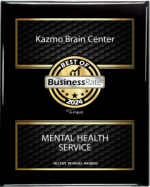Cognitive behavioral therapy (CBT) is a type of talk therapy that combines cognitive processes with behavioral strategies. Treatments with CBT are usually short-term, lasting a few weeks or a few months.
However, CBT provides you with tools to deal with the problems you are facing now, not just in the past. This type of therapy can lead to many different outcomes.
The following are some of the techniques used in CBT, what issues they address, and what to expect.
Cognitive behavioral therapy (CBT) Techniques
The core tenet of CBT is that your mental habits influence your feelings, which affect your behaviors.
CBT, for example, stresses how negative ideas can result in emotional stress and behaviors. However, shifting your view to a more positive one might result in happier emotions and valuable activities.
You’ll learn from your therapist how to make rapid adjustments. You can use these abilities for the remainder of your life.
There are various strategies for implementing CBT, depending on the problem you’re trying to solve and your objectives. Regardless of the way your therapist employs, it will involve:
- Addressing specific concerns or issues in your daily lives
- Noticing harmful thought patterns and how they affect your life
- Recognizing negative thoughts and shaping them to change how you feel
- Getting new behaviors and putting them into action
Your therapist will decide on the appropriate CBT tactics to use after discussing with you and knowing more about the issue you want to treat.
The following strategies are some of the most commonly used techniques with Cognitive behavioral therapy (CBT):
1. Playing A Role
You can practice various behaviors in potentially challenging situations by role-playing. Playing out potential outcomes can help reduce fear and be used for:
Enhancing problem-solving abilities
Obtaining comfort and trust in particular conditions
Putting social skills to use
Fostering assertiveness
Enhancing communication abilities
2. Cognitive Reorganization or Reframing
It means reviewing negative thought patterns closely.
You seem to overgeneralize, expect the worst, or place too much emphasis on little facts. This type of thinking can influence your actions. It can even become a self-fulfilling destiny.
Your therapist will discuss your mental process in various settings to help you detect bad tendencies. Once you know them, you can learn how to frame them to be more useful and productive.
3. Stress-Reduction and Relaxation Methods
You might learn progressive relaxation techniques in CBT, like:
activities for deep breathing and muscle relaxation
You’ll acquire helpful abilities that might help you feel more in control and reduce stress. It can be important in controlling stressors such as phobias and social concerns.
4. Approximation in Succession
It entails breaking down seemingly impossible tasks into smaller, more manageable steps. You gain confidence as you go because each subsequent step builds on the one before it, little by little.
5. Guided Trip
During guided exploration, the therapist will become familiar with your point of view. They’ll start asking you questions meant to make you rethink your viewpoints.
You can be requested to provide two facts that contradict and evidence that supports your views.
You’ll be able to view things from several angles, particularly those you might not have previously considered. It can direct you in a more positive direction.
6. Exposure Treatment
To face anxieties and phobias, one can employ exposure treatment. Your therapist will try and introduce you to the situations that make you feel anxious or fearful while offering advice on how to deal with them right then and there.
The therapist takes small steps to complete this. Exposure can help you feel less insecure and more confident in your coping skills.
7. Behavioral Research
The treatment for anxiety disorders that involve tragic thinking often involves behavioral studies.
The therapist will ask you to forecast what will happen before starting a chore that typically gives you anxiety. You’ll discuss whether the forecast came true later.
You might begin to realize that the projected calamity is not going to arise over time. You’ll probably start with easier jobs and progress from there.
What issues can CBT fix?
CBT is effective for many common issues, including anxiety management and learning how to handle difficult events.
CBT can be helpful without a medical diagnosis.
It may also be helpful for:
Learning how to control strong feelings like fear, rage, or grief
Coping with loss, controlling symptoms, or avoiding relapses
Managing issues with one’s physical health
Communication skills improvement through conflict resolution
Fostering bravery
Any Risks?
Although CBT is not typically seen as a dangerous therapy, there are a few considerations to bear in mind:
Although everyone is different, some people can first find it unpleasant or unsettling to face their concerns.
While you go through some forms of CBT, such as exposure treatment, tension and anxiety may worsen.







